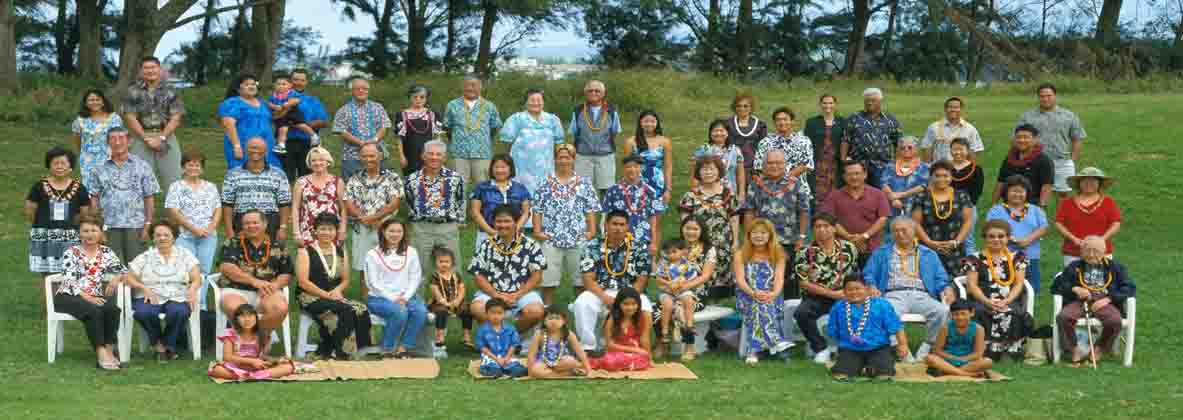
Past Exhibition
Visible & Invisible
A Hapa Japanese American History
Resources
Hapa Japan Database Project

The Hapa Japan Database Project is a forum for connecting mixed-race and mixed-roots Japanese people. The Project sponsors a website with social networking, genealogical, and educational features. They also host a Festival every other year that celebrates this community through concerts, exhibits, comedy nights, film screenings, and academic conferences. Hapa Japan I took place in April 2011 in the San Francisco Bay Area and Hapa Japan 2013 runs from April 2-6, 2013 in Los Angeles.
Related Resources on Discover Nikkei
 Discover Nikkei is a community-based project of the Japanese American National Museum that explores Nikkei identity and community stories. The website provides an inviting space for a global community to share, explore, and connect with each other through diverse Nikkei experiences, culture, and history.
Discover Nikkei is a community-based project of the Japanese American National Museum that explores Nikkei identity and community stories. The website provides an inviting space for a global community to share, explore, and connect with each other through diverse Nikkei experiences, culture, and history.
Explore a range of community stories and perspectives through daily Journal articles, first-person interviews, Nikkei Albums, events, and more.
Resources
April 07 - August 25, 2013
Japanese American National Museum
Resources
Hapa Japan Database Project

The Hapa Japan Database Project is a forum for connecting mixed-race and mixed-roots Japanese people. The Project sponsors a website with social networking, genealogical, and educational features. They also host a Festival every other year that celebrates this community through concerts, exhibits, comedy nights, film screenings, and academic conferences. Hapa Japan I took place in April 2011 in the San Francisco Bay Area and Hapa Japan 2013 runs from April 2-6, 2013 in Los Angeles.
Related Resources on Discover Nikkei
 Discover Nikkei is a community-based project of the Japanese American National Museum that explores Nikkei identity and community stories. The website provides an inviting space for a global community to share, explore, and connect with each other through diverse Nikkei experiences, culture, and history.
Discover Nikkei is a community-based project of the Japanese American National Museum that explores Nikkei identity and community stories. The website provides an inviting space for a global community to share, explore, and connect with each other through diverse Nikkei experiences, culture, and history.
Explore a range of community stories and perspectives through daily Journal articles, first-person interviews, Nikkei Albums, events, and more.
Resources
April 07 - August 25, 2013
Japanese American National Museum
Resources
Hapa Japan Database Project

The Hapa Japan Database Project is a forum for connecting mixed-race and mixed-roots Japanese people. The Project sponsors a website with social networking, genealogical, and educational features. They also host a Festival every other year that celebrates this community through concerts, exhibits, comedy nights, film screenings, and academic conferences. Hapa Japan I took place in April 2011 in the San Francisco Bay Area and Hapa Japan 2013 runs from April 2-6, 2013 in Los Angeles.
Related Resources on Discover Nikkei
 Discover Nikkei is a community-based project of the Japanese American National Museum that explores Nikkei identity and community stories. The website provides an inviting space for a global community to share, explore, and connect with each other through diverse Nikkei experiences, culture, and history.
Discover Nikkei is a community-based project of the Japanese American National Museum that explores Nikkei identity and community stories. The website provides an inviting space for a global community to share, explore, and connect with each other through diverse Nikkei experiences, culture, and history.
Explore a range of community stories and perspectives through daily Journal articles, first-person interviews, Nikkei Albums, events, and more.
Videos

Jero (Jerome Charles White Jr.)
2010 interview about cultural identity and becoming an enka singer in Japan.

Virgil Westdale
2013 interview with the early Hapa Nisei about discrimination in the Army Air Corps, and serving in the 442nd R.C.T. and 522nd Field Artillery Battalion during World War II.

Terry Janzen
2012 interview about growing in Japan, memories of Poston, and post-war life.

Mike Shinoda
2006 interview with the Linkin Park musician about identity, connection to Japan, and role as an artist and musician.

Kip Fulbeck
2006 interview about Hapa identity with the artist and curator.
Articles

On Being Japanese American
“What does it mean to be Japanese? To be Black? To be both, at the same time…To separate them is nearly impossible…”

When There Was No “Hapa”
“Throughout most of my life I’ve been THE Asian in the room, so to speak.”

Part Asian, Not Hapa
“My mother is Japanese from Osaka; my father, American from a small town in Western Oregon. There’s a word for people like me, used especially on the West Coast and popularized in recent years, maybe most notably by artist Kip Fulbeck: Hapa.”

My Transnational, Hapa Identity in Question
”I like to say that I have a transnational, multicultural, multiethnic identity. I am hapa, haafu, I am both/and, Japanese AND American. But I know that many others still see the world in dichotomies, as either/or, Japanese OR American.”

Analyze My Face: Hapas, exoticism and the entertainment industry
“I heard him utter the recurring phrase of my life, the one that was born in the mouths of the children at Hiroba Koen and echoed to lips of an up and coming film director in New York City on the set of a big budget feature.
‘She doesn’t look Asian enough.’”
Nikkei Albums

The Hapa Collection
“What are you?”
That’s the question posed to visitors to JANM’s exhibition kip fulbeck: part asian / 100% hapa (Los Angeles, June 8 – October 29, 2006). The exhibition included over 80 photographic portraits of people of multiracial heritage, selected from the 1,000 portraits taken by artist Kip Fulbeck over three years. During the run of the exhibition, visitors were asked to take a Polaroid photograph in the gallery and add their images and personal responses to the question of “What are you?” to the exhibition’s interactive display. A selection from the overwhelming participation in Los Angeles is included here.

Revelations & Resilience: Exploring the Realities of Hapa-ness
Photos and video from the event “Revelations & Resilience: Exploring the Realities of Hapa-ness” organized by JANM’s Discover Nikkei project on April 12, 2008.
Nikkei+ ~ Stories of Mixed Language, Traditions, Generations & Race ~

Nikkei Chronicles
This series introduced stories that explore how Nikkei around the world perceive and experience being multiracial, multinational, multilingual, and multigenerational.
